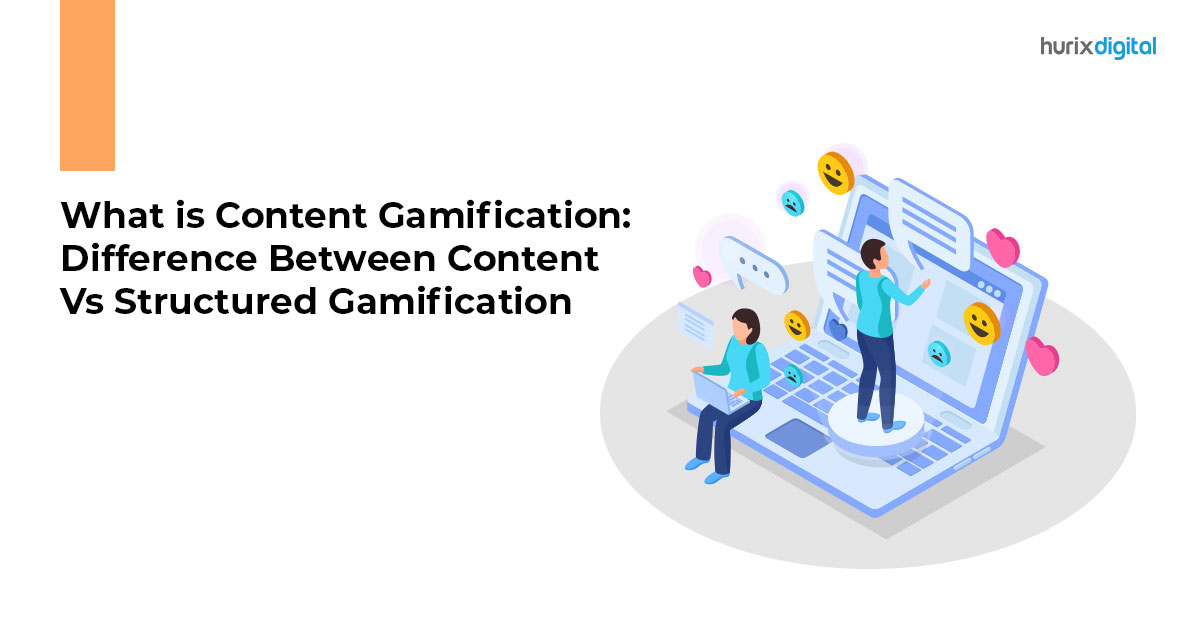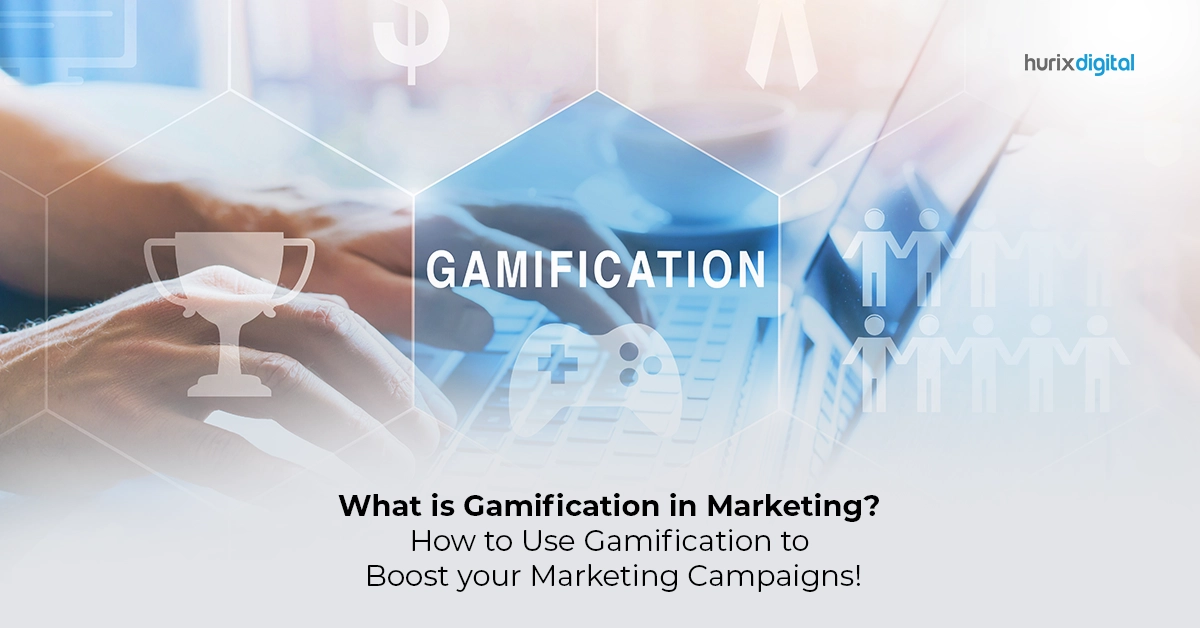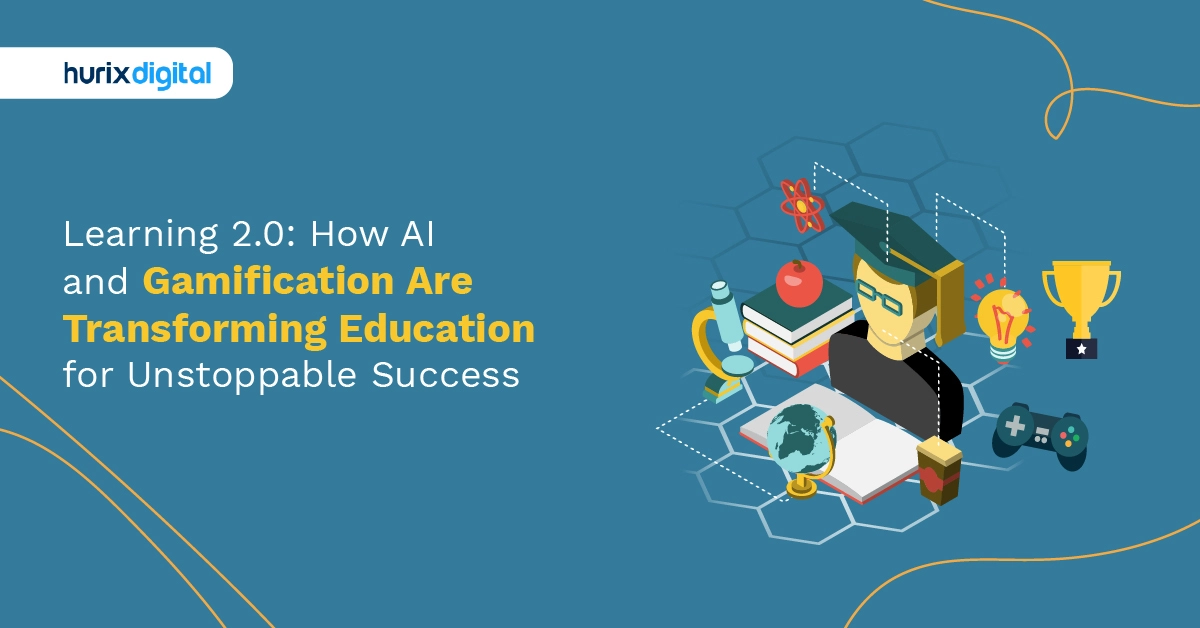
What is Content Gamification: Difference Between Content Vs. Structured Gamification
Summarize with:
Content gamification refers to adding game elements to content, often for educational or instructional purposes. It can be described as applying game thinking to instructional or educational content.
Here are some important statistics to consider:
- The global market for gamification strategies is expected to reach $58.8 billion by 2028, with education being ranked as the top segment.
- Gamification is a popular corporate learning strategy for making online training more interactive. In e-learning, gamification is particularly prevalent because of the scope for gamification that online tools allow.
- A Gartner report predicts that more than 70% of businesses in the top 2000 global companies have already adopted gamification as a strategy.
These stats make it abundantly clear how vital gamification will be in the next few years, especially in the education sector. Read on to learn how!
Table of Contents:
- What is Content Gamification?
- What is Structured Gamification?
- How is Gamification Applied in Education?
- What is the Difference Between Content and Structured Gamification?
- Content Gamification Examples
- Structural Gamification Examples
- To Wrap Up
What is Content Gamification?
Content gamification is the process of integrating game-like elements such as points, levels, badges, or storytelling into educational or marketing content to enhance user engagement and motivation without changing the core content itself.
What is Structured Gamification?
Structured Gamification is a type of gamification where game elements like points, badges, and leaderboards are added to content without altering the content itself. It focuses on motivating engagement and learning through the structure of the experience, rather than fundamentally transforming the content into a game.
How is Gamification Applied in Education?
Here are some ways in which gamified content is applied in the field of education:
1. Points, Badges, and Leaderboards
Points are issued when students finish an activity, project, test, quiz, or discussion. This introduces a reward system that encourages motivation.
Badges can be issued when students complete specific accomplishments, such as mastering a concept or completing a challenge.
Leaderboards can display students’ comparative performance to motivate healthy competition.
2. Progression Levels
Progression levels work like video game levels. The learner starts at the beginner level and then moves to more demanding levels. At each progressing level, learners unlock new material, feeling a sense of accomplishment as they progress.
3. Challenges, Quests, and Puzzles
Gamification introduces the learning process through challenges or quests where the students have to solve problems or complete a certain project. The learning is engaging and exciting, encouraging creativity and critical thinking.
Activities such as puzzles stimulate cognitive skills and can break down complex topics into digestible pieces.
4. Time-Based Challenges
Time-bound activities motivate students to complete something in a given time period. They can also be a reality-based scenario that requires learners to make instant decisions, considering time management with limited time.
5. Story and Narrative
Learning through stories means using an engaging narrative in which students perform as characters or solve problems within a plot. It extracts the best efforts from students and displays their skills and involvement in the learning process.
6. Rewards
Besides points or badges, rewards can be utilized to obtain better results and performance. Rewards can be extra credit, virtual gifts, or real-world benefits through the system.
7. Simulations and Role-Playing Games
Simulations are settings where students immerse themselves in a real or imaginary environment and apply the knowledge acquired in various practical scenarios.
Role-playing games allow the students to take on personas, making learning much more engrossing and interactive.
Also Read: Gamification 2.0: Shaping the Future of Education through Interactive Learning
What is the Difference Between Content and Structured Gamification?
There are two types of gamification for learning: structural gamification and content gamification. Each approach uses game design elements differently, so let’s break down each type and understand where they differ. The differences between content gamification and structural gamification are given below:
1. Meaning and Significance
Structural gamification refers to the process of application of game elements to learning content without changing the content. The gamification is designed and structured around the content.
The main aim behind structural gamification is to motivate the learner to proceed through the content and engage them in it through rewards.
For instance, the learner would gain points for completing a course segment or an assignment. The learning material may not have game elements, but the points or badges at the end are the game elements.
Content gamification refers to applying game elements and thinking and altering content to make it more game-like. In this kind of gamification, the learning material has game elements like characters or other story elements like scenarios.
2. Game Elements and Mechanics
In structural gamification, game mechanics and elements like badges and points can be added to support the learning content. These elements can be added without changing the learning content; they are independent of it.
Content gamification engages learners with game elements and mechanics like challenges, storytelling, and feedback loops.
Rewards act as an incentive to motivate learners and make the learning process more engaging. The rewards are designed around the gamified content to make it more related to the topics.
3. Learning Objectives
In structural gamification, the learning objectives are not a part of the gamification process. The game elements have more to do with the results, such as the points obtained.
In content gamification, the learners are usually unaware of the learning objectives. For example, the learner may be explained a process and is then required to answer questions based on the gamified content to earn rewards.
4. Cost Involved
The initial cost of developing structured gamification is usually higher because it involves developing a platform on which gamification elements can be introduced.
The cost of development for content gamification is more continuous because the content may change. Developing it requires changing the content to make it more game-like.
5. Updating Content
With structural gamification, content can be easily updated with only minor changes to the content design. By changing the instruction design, you can make the content more learner-friendly.
With content gamification, updating the content may require changes to the content design as well. In these cases, major content rework and organization are usually required.
6. Development
The time taken for structural gamification differs depending on the kind of gamification platform being developed. Once the platform is developed, the process is straightforward: the gamified content has to be added to it. It is easier to develop and can be quickly applied.
Content gamification requires more time and planning because the content itself is developed or changed to make it more game-like. While the conceptualization takes a long time, the development time may not be as long. Other delays may be caused by the need to coordinate with the instructors or educators regarding the learning material. This is usually more time-intensive, costs more to develop, and may require more testing.
7. Function
With structural gamification, the gamified content does not become a game but is presented in a game-like structure. This can be described as a gamification template-based approach. You can plug different content into the gamification templates, making it more time and cost-efficient.
In content gamification, the content is usually turned into a game or given game-like elements. Since the structure is created for specific content (as opposed to being a general gamified template), it is usually best suited for one-time use.
Once developed, it can only be used for that specific learning material.
The game elements are based on the context and application of the content. For example, in Monopoly, game elements like buying houses are all related to the content topic itself—real estate.
8. Reusability
Since the content in structured gamification is unchanged, the gamified template can be used for different training modules.
However, once it is developed, content gamification can be used only for that particular topic.
9. Best Use
Structural gamification is best used to improve engagement in organizational processes such as mandatory compliance and inducting new hires. The gamified structure makes these processes more engaging for employees.
Content gamification is best used for acquiring new skills since its interactive nature makes learning more effective.
Content Gamification Examples
Here are some examples of content gamification:
- Language Learning: We use a gamification approach based on content to turn language learning into an adventure. Each lesson is designed like a mini-game, and learners accumulate points as they progress through it. They automatically receive instant feedback as to their progress in completing these mini-games.
- Educational Quizzes: This is a game feature that adds some interaction to the learning of educational content in the form of fast-paced quizzes. The learners compete in real-time in answering questions regarding various topics. They respond as accurately and quickly as possible in a quest to accumulate points.
- Productivity and Habit-Building: Examples of content gamification include productivity tasks and habit formation as role-playing games. Users create avatars, where they perform real-world tasks to earn experience points and rewards. Tasks like ‘write an article’ or ‘exercise for 30 minutes’ become quests within the game.
Structural Gamification Examples
Take a look at some of the structured gamification examples:
- Fitness Tracking: Fitness Tracking apps incorporate structural gamification in features like badges, leaderboards, and challenges. The structure in which enthusiasts engage with the platform is gamified.
- Professional Networking: Professional networking sites such as LinkedIn employ structural gamification through the endorsement system, skill badges, and profile completion percentage. This approach encourages users to add skills and recommendations to complete their profiles to achieve profile strength badges.
- Crowdsourcing Reviews: This is a structural gamification example where participants receive points and badges for adding reviews, photos of places, and answering questions about local places.
Also Read: Explore the Top 8 Gamification Strategies in Education for 2024!
To Wrap Up
When considering gamification of your learning material, keep in mind the differences between content gamification and structural gamification. Each one can be used for different learning materials based on the kind of gamified content being delivered and the objective.
Hurix Digital offers gamified learning solutions for e-learning and training. Its virtual learning solutions include puzzles, problem-solving games, scenarios, challenges, and more to keep learners engaged and motivated.
Reach out today to learn more!
Summarize with:

Passionate about developing innovative business models for customers in the content space. Primarily focused on the markets: US, UK, Europe, Middle East and APAC with 18 years of experience. Focused on collaborative working with internal teams such as Technology, Operations, Finance, and Marketing to ensure the voice of the customer is in everything that the company builds.
 Upcoming Masterclass | Build an Army of Brand Evangelists using Training & Development | November 20th, 8:30 AM PDT | 11:30 AM EDT | 10:00 PM IST
Upcoming Masterclass | Build an Army of Brand Evangelists using Training & Development | November 20th, 8:30 AM PDT | 11:30 AM EDT | 10:00 PM IST




